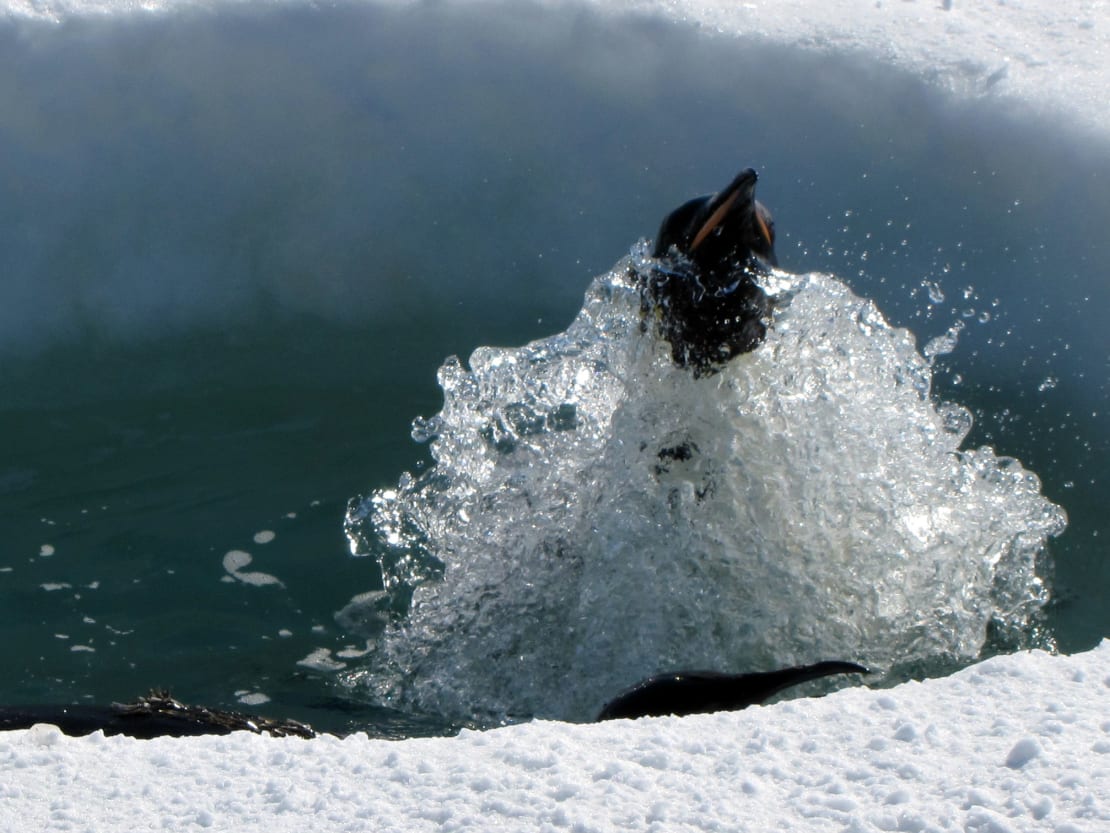
While work at the IceCube Neutrino Observatory focuses on the edges of the Universe, the public is often interested in something which resides on the edges of Antarctica- penguins.
Public interest in penguins recently provided IceCube researcher Mark Krasberg of the University of Wisconsin-Madison with an edge in the UW-Madison Cool Science Contest where he won an award for his photo of an emperor penguin leaping out of the water.
We sat down with Mark to ask him where he got the image and to find out what he does.
What do you do?
I’m an Associate Researcher with the Wisconsin IceCube Particle Astrophysics Center.
How long have you worked for IceCube?
Eight years.
How many times have you been to the South Pole and what did you do there?
Seven times. I worked on deploying and commissioning the digital optical modules that are the eyes of the IceCube detector.
“Deploying and commissioning”? What does that actually mean?
Deploying means attaching modules to the cables and watching them go down the hole. Commissioning is when you turn them on and make sure they work once they are in the ice.
Cool. Where did you take this photo?
It was taken near McMurdo station at the “Penguin Ranch.” The ranch is a place where scientists study emperor penguin physiology. Basically, they capture a dozen penguins and fence them in. There is a hole in the ice for the penguins to get in and out of the water to get food. The ice is thick, so there it’s a five foot jump for them to get out.
How long did you wait to get that photo?
Five hours! But it was worth it. There is also an observation tube in the ice where you can see the penguins under water.
You’ve had a lot of adventures on your way to and from Antarctica. Name a few of them.
I traveled on the Oden Icebreaker for awhile. Once I saw about 200 Adelie penguins marching around the surface of the ice. I’ve also been SCUBA diving in the Great Barrier Reef, Fiji, Thailand, Hawaii, and New Zealand.
What’s your favorite part about traveling to the South Pole?
Seeing wildlife. Obviously the penguins, but also killer whales, seals, and lots of birds.
Click the image below for a full-sized version of Mark’s winning photo:
